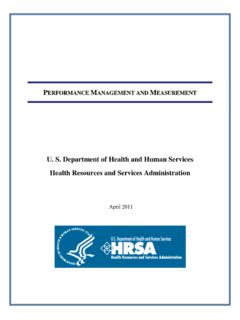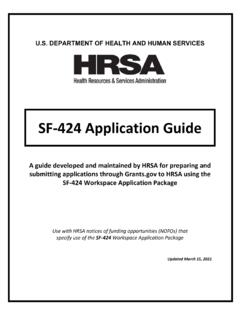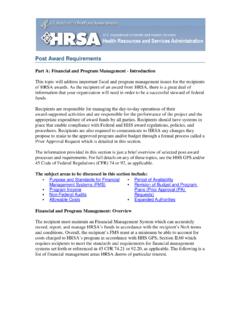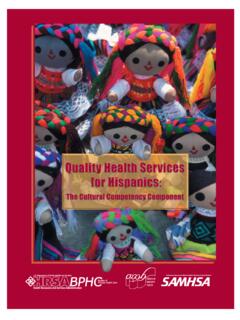Transcription of Newborn Screening for CCHD
1 Newborn Screening for Critical congenital Heart Disease A Summary of the Evidence and Advisory Committee Decision Report Date: 03 September 2010 This summary was prepared under a contract to Duke University from the Maternal and Child Health Bureau of the Health and Resources and Services Administration (Contract Number: HHSH250201500002I/HHSH25034003T). 2 EXECUTIVE SUMMARY This summary reviews the information the federal advisory committee used when deciding whether to recommend adding Critical congenital Heart Disease (CCHD) to the Recommended Uniform Screening Panel (RUSP) in 2010. About the condition CCHD is a group of the most serious heart disorders present at birth.
2 About 200 out of every 100,000 babies have CCHD. Children with CCHD are born with a wide range of problems with the heart s structure. These problems prevent the heart from pumping blood normally to the lungs and rest of the body. Because blood carries oxygen, parts of the body may not get enough oxygen. There are many types of CCHD, and all can cause serious health problems. These problems can worsen quickly and cause death in early childhood. Babies with CCHD need treatment early in life. Treatment for CCHD Babies with CCHD need treatment early in life. Many babies need surgery right away. Other babies need medicines or other procedures to help with blood flow or heart problems.
3 The type of treatment a baby needs depends on the baby s heart problem and symptoms. Detecting CCHD in newborns CCHD may be found before birth with a prenatal ultrasound. After birth, Newborn CCHD Screening usually happens when a baby is between 24 and 48 hours old. Newborn CCHD Screening uses a device called a pulse oximeter to measure oxygen in the baby s blood. Newborns with low blood oxygen are at higher risk for CCHD. They need more tests to diagnose the condition. Public health impact Detailed data on how Newborn CCHD Screening would affect public health were not available at the time of the report.
4 However, Newborn Screening for CCHD saves lives by allowing diagnosis early in life. Babies who get a diagnosis before leaving the hospital may avoid both life-threatening symptoms and treatment delays that can cause death. Committee decision The Committee voted in 2010 to recommend adding CCHD to the RUSP. As of 2011, the RUSP recommends that state Newborn Screening programs include CCHD. 3 ABOUT THIS SUMMARY What is Newborn Screening ? Newborn Screening is a public health service that can change a baby s life. Newborn Screening involves checking all babies to identify those few who look healthy but who are at risk for one of several serious health conditions that benefit from early treatment.
5 Certain serious illnesses can be present even when a baby looks healthy. If the baby does not receive Screening for these illnesses early in life, a diagnosis may be delayed. Later treatment might not work as well as earlier treatment. Newborn Screening programs have saved the lives and improved the health of thousands of babies in the United States (US). Who decides what Screening newborns receive? In the US, each state decides which conditions to include in its Newborn Screening program. To help states determine which conditions to include, the US Secretary of Health and Human Services provides a list of conditions recommended for Screening .
6 This list is called the Recommended Uniform Screening Panel (RUSP). Progress in Screening and medical treatments can lead to new opportunities for Newborn Screening . To learn how a condition is added to the RUSP, see Box A. What will this summary tell me? In 2010, the Advisory Committee on Heritable Disorders in Newborns and Children (ACHDNC) requested an evidence review of Newborn Screening for Critical congenital Heart Disease (CCHD). This summary presents key review information that the Committee used to make its decision about whether to recommend adding CCHD to the RUSP. It will answer these questions: What is CCHD?
7 How is CCHD treated? How are newborns screened for CCHD? Does early diagnosis or treatment help patients with CCHD? What is the public health impact of Newborn CCHD Screening in the US? What did the Committee decide about adding CCHD to the RUSP? Box A: Adding a Condition to the RUSP A committee, called the Advisory Committee on Heritable Disorders in Newborns and Children (ACHDNC), makes a recommendation to the US Secretary of Health and Human Services about adding specific conditions to the RUSP. The Committee bases its decision on a review of the condition, the screen, the treatment, and the ability of Newborn Screening programs to check for the condition.
8 To learn more about the ACHDNC, visit this website. 4 UNDERSTANDING THE CONDITION What is CCHD? CCHD is a group of the most serious heart disorders present at birth. Children with CCHD are born with a wide range of problems with the heart s structure. Most of the time, the cause of these problems is not known. These problems prevent the heart from pumping blood normally to the lungs and rest of the body. Because blood carries oxygen, parts of the body may not get enough oxygen. Therefore, babies with CCHD need treatment early in life to help oxygen-rich blood reach the body. Treatment can lower the risk of serious illness or death.
9 How common is CCHD? About 200 out of every 100,000 children have CCHD. What kinds of health problems does CCHD cause? Babies with CCHD have problems with the heart. CCHD can also cause other symptoms that affect other parts of the body (Figure 1). Figure 1: CCHD Symptoms. 5 Are there different types of CCHD? Yes. Doctors classify CCHD into many types based on the structure of the heart. To learn more about key parts of the heart that may have problems in CCHD, see Figure 2. In most types of CCHD, blood flowing to the body does not have enough oxygen. All types of CCHD can cause serious health problems.
10 All types require treatment early in life. Early detection is crucial for all types of CCHD. Figure 2: Key Parts of the Heart. Note: This picture shows a normal infant heart. In CCHD, the heart may look different in many ways. When do CCHD symptoms develop? Babies are born with CCHD. However, many babies with CCHD have no symptoms at birth. These babies may look healthy at first, but many develop symptoms within the first days or weeks of life. Therefore, parents and doctors should monitor newborns for the CCHD symptoms shown in Figure 1. Symptoms of CCHD can worsen quickly. Babies who have symptoms at home may not get care in time to prevent death.

















